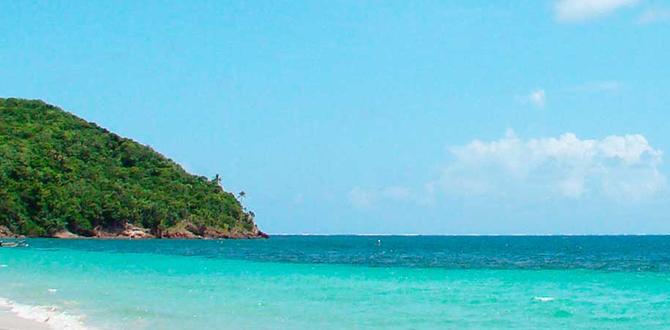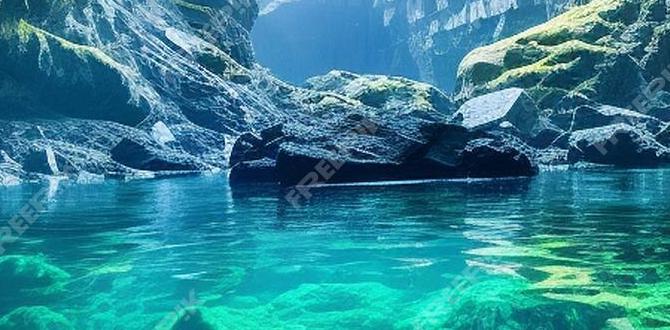Planning a trip to the Azores and wondering where to stay? This Azorean neighborhood guide unveils essential secrets for finding the perfect spot, ensuring comfort, convenience, and local immersion for a truly unforgettable island adventure.
Ah, the Azores! A cluster of volcanic islands in the mid-Atlantic, calling out with their lush green landscapes, dramatic coastlines, and charming villages. But where on earth (or rather, out at sea) do you begin to choose your perfect base? It’s a question many travelers, especially first-timers, grapple with. The Islands are divided into three groups: the Eastern (São Miguel, Santa Maria), Central (Terceira, Graciosa, São Jorge, Pico, Faial), and Western (Flores, Corvo). Each has its unique vibe, and within each island, different towns offer distinct experiences. Picking just one spot can feel like trying to choose your favorite Azorean cheese – tough, but oh-so-rewarding when you get it right!
Don’t worry, fellow explorers! I’m Michael C. Herrera from Journey Essentials, and I’m here to break down the magic of the Azores. We’ll explore charming neighborhoods, uncover hidden gems, and ensure you find a place that feels like home, even thousands of miles away. Get ready to discover the essential secrets of an Azorean neighborhood guide, making your travel planning as smooth and comfortable as a well-packed carry-on.
Let’s dive in and find your perfect Azorean corner!
Why Your Azores Neighborhood Choice Matters
Choosing the right neighborhood in the Azores isn’t just about where you’ll sleep. It’s about how you’ll experience the islands. Your chosen base can influence everything from how easily you can access stunning viewpoints and hiking trails to the types of restaurants you’ll discover and the local atmosphere you’ll soak in. Do you dream of waking up to the sound of the ocean, exploring bustling town squares, or being nestled amidst rolling green hills?
For families, especially those traveling with younger children or needing extra considerations like adult or child diapers for peace of mind on longer excursions, a strategically located neighborhood can mean proximity to amenities and a calmer environment. For solo adventurers or couples, the vibe of a town – whether it’s lively with nightlife or peacefully serene – can significantly shape the trip’s overall feel. Understanding these nuances is the first step to an enjoyable Azorean escape.
The Big Picture: Azores Island Geography & Vibe
Before we zoom into specific neighborhoods, let’s get a bird’s-eye view of the islands. The Azores are spread out, and while inter-island travel is possible, it often involves flights or ferries, so choosing one or two main islands to focus on is usually best for a first visit.
The islands boast incredible biodiversity and geological wonders. You’ll find calderas, hot springs, lava tubes, unique flora, and a rich maritime culture. The pace of life is generally slower and more relaxed than on the mainland, encouraging you to savor each moment.
Let’s briefly touch upon the general feel of the island groups:
- Eastern Group (São Miguel & Santa Maria): São Miguel is the largest and most diverse, offering a bit of everything. Santa Maria is known for its warmer climate and sandy beaches.
- Central Group (Terceira, Graciosa, São Jorge, Pico, Faial): This group is diverse. Terceira offers vibrant culture and history. Pico is famed for its volcanic landscapes and wine. Faial is a hub for Atlantic sailing. São Jorge is wild and dramatic, while Graciosa is flatter and known for its windmills.
- Western Group (Flores & Corvo): These are the most remote, showcasing raw, spectacular nature, especially Flores with its abundant waterfalls.
São Miguel: The Green Island’s Quintessential Neighborhoods
São Miguel is the most popular island, and for good reason. It offers a wide range of experiences, from volcanic lakes to hot springs and charming towns perfect for exploring.
Ponta Delgada: The Lively Capital
As the capital and largest city, Ponta Delgada is the most developed area and a fantastic base for many travelers. It offers the most amenities, a wider range of accommodations, and a good selection of restaurants and shops.
- Vibe: Bustling, historic, convenient.
- Best for: First-time visitors, those who want easy access to amenities, foodies, travelers preferring a city base.
- Pros:
- Most accommodation options (hotels, guesthouses, apartments).
- Excellent restaurants, cafes, and bars.
- Main transportation hub (airport, ferry terminal, bus station).
- Good starting point for exploring the island.
- Museums, historic architecture, and lively promenades.
- Cons:
- Can be busier and less “remote” feeling than other areas.
- Parking can be challenging.
- Beaches are not immediately within the city center.
- Getting Around: Within Ponta Delgada, walking is easy. For island exploration, renting a car is highly recommended. Buses connect to other towns, but schedules can be limited. Taxis and ride-sharing are available.
- Why Families Love It: Proximity to shops means easy replenishment of supplies, including essentials like diapers. The city offers parks and a generally safe environment for strolling.
Traveler Tip: If you’re looking for a comfortable stay with easy access to everything, and don’t mind a bit of city buzz, Ponta Delgada is your spot. It’s a great place to get your bearings and plan your adventures.
Ribeira Grande: The North Coast Charm
Located on São Miguel’s north coast, Ribeira Grande is the island’s second-largest city. It offers a more laid-back feel than Ponta Delgada but still boasts a good range of services.
- Vibe: Authentic, coastal, a touch more local.
- Best for: Surfers, nature lovers, those seeking a balance between convenience and local charm.
- Pros:
- Beautiful black sand beaches, popular for surfing.
- Close proximity to natural attractions like Sete Cidades and Lagoa do Fogo.
- More affordable accommodation options than Ponta Delgada.
- Lively town center with local shops and restaurants.
- Historic architecture, including an impressive bridge and city hall.
- Cons:
- Further from the airport than Ponta Delgada (approx. 30-40 min drive).
- Public transport connections are less frequent than in the capital.
- Getting Around: A rental car is essential for exploring the island from Ribeira Grande.
- Comfort Consideration: Having a car here is key for both convenience and access to nearby attractions. Also, if you need to manage accessibility needs, knowing there are larger towns nearby with more services can be reassuring.
Michael’s Note: Ribeira Grande is a great choice if you want to be close to some of São Miguel’s most iconic natural wonders while still having a town with character and amenities at your doorstep.
Furnas: The Geothermal Heart
Nestled in a volcanic crater, Furnas is famous for its steaming fumaroles, hot springs, and lush botanical gardens. It’s a unique destination offering a truly immersive natural experience.
- Vibe: Tranquil, unique, nature-focused.
- Best for: Relaxation, experiencing geothermal activity, nature enthusiasts, spa lovers.
- Pros:
- World-renowned hot springs and thermal pools (Terra Nostra Park, Poça da Dona Beija).
- Opportunity to taste “Cozido das Furnas,” stew cooked by volcanic heat.
- Stunning volcanic landscapes and a tranquil atmosphere.
- Close to the beautiful Terra Nostra Botanical Garden.
- Smaller, more intimate feel.
- Cons:
- Limited dining and shopping options compared to larger towns.
- Can feel very quiet in the evenings.
- The smell of sulfur is present in some areas due to geothermal activity.
- Further drive to other island attractions.
- Getting Around: A rental car is useful for accessing Furnas and exploring the surrounding areas, though many attractions within Furnas are walkable.
- Traveler’s Comfort: For those prioritizing relaxation and unique wellness experiences, Furnas is unparalleled. The therapeutic waters are a significant draw. Think of it as a natural spa retreat.
Did You Know? The “Cozido das Furnas” is a culinary experience where meat and vegetables are slow-cooked for hours in pots buried in the hot volcanic ground. It’s a must-try!
The South Coast Villages (e.g., Vila Franca do Campo, Lagoa)
These smaller coastal towns offer a quieter, more residential feel while still being strategically located for exploring São Miguel.
- Vibe: Peaceful, community-oriented, traditional.
- Best for: Travelers seeking a quieter base, families, those who want to live like a local.
- Pros:
- Authentic Azorean village life.
- Generally more affordable than Ponta Delgada or Ribeira Grande.
- Many have lovely waterfronts and local eateries.
- Good access to the highway for exploring the island.
- Vila Franca do Campo offers access to the stunning islet (Ilhéu de Vila Franca do Campo).
- Cons:
- Fewer tourist amenities and dining options.
- Public transport is very limited.
- May require more driving to reach major attractions.
- Getting Around: A rental car is essential for any of these smaller villages.
Family Focus: For families looking for a quiet place to stay, these villages can be ideal. Having a car makes it easy to pick up groceries and travel to larger towns for specific needs, ensuring comfort and convenience for everyone, including managing essentials without constant worry.
Terceira: Culture, History & Colorful Towns
Terceira is known for its beautiful historic towns, vibrant festivals, and unique volcanic landscapes. It’s often considered the cultural capital of the Azores.
Angra do Heroísmo: UNESCO World Heritage Gem
Angra do Heroísmo is a stunning city with a rich history, a UNESCO World Heritage Site, and arguably the most beautiful historic center in the Azores. It’s an excellent base for exploring Terceira.
- Vibe: Historic, vibrant, cultural, picturesque.
- Best for: History buffs, culture lovers, those who appreciate beautiful architecture and a lively atmosphere.
- Pros:
- Incredible UNESCO-listed historic center with colorful buildings, churches, and fortresses.
- Wide range of excellent restaurants and cafes.
- Central location for exploring the island.
- Good selection of hotels and guesthouses.
- A bustling port town with a lively marina.
- Cons:
- Can be busy, especially during festivals like the “Touradas à Corda.”
- Parking can be an issue in the historic center.
- Getting Around: Walking is ideal within Angra. Renting a car is recommended for exploring the rest of Terceira.
- Michael’s Recommendation: If you want to be immersed in history and enjoy a town with a lively, sophisticated feel, Angra do Heroísmo is your prime choice on Terceira.
Praia da Vitória: The Sunny Side
Located on the northeastern side of Terceira, Praia da Vitória offers a more relaxed, beach-focused atmosphere.
- Vibe: Sunny, relaxed, beach-centric.
- Best for: Beach lovers, families seeking a calmer base.
- Pros:
- Beautiful, long sandy beach.
- A more laid-back vibe than Angra.
- Good range of restaurants and amenities.
- Close to the airport.
- Cons:
- Less historic charm than Angra.
- Can be quieter outside of peak summer months.
- Getting Around: A rental car is advisable for exploring Terceira from Praia da Vitória.
Pico: The Mountain Island’s Unique Haunts
Pico is dominated by Mount Pico, Portugal’s highest peak. It’s famous for its unique volcanic vineyards and dramatic landscapes.
Madalena: Gateway to Mount Pico & Wine Region
Madalena is the main town on Pico and the center of its renowned wine region.
- Vibe: Wine-focused, dramatic scenery, laid-back coastal.
- Best for: Wine lovers, hikers, those seeking stunning volcanic landscapes.
- Pros:
- Heart of the UNESCO World Heritage Vineyard Landscape.
- Access to wineries for tours and tastings.
- Views of Mount Pico and the neighboring island of Faial.
- Ferry links to Faial and São Jorge.
- Opportunities for whale and dolphin watching tours.
- Cons:
- Limited nightlife.
- Can be very windy.
- Fewer accommodation options compared to São Miguel.
- Getting Around: A rental car is essential for exploring Pico’s diverse landscape and vineyards.
- Adventure Comfort: If hiking Mount Pico or exploring vineyards is on your list, staying in or near Madalena makes access straightforward and comfortable.
External Link: For more information on Pico’s unique wine culture, check out the UNESCO World Heritage site listing for the vineyard landscape of Pico Island.
São Roque do Pico: A Historic Port Town
Another significant town on Pico, São Roque offers a different perspective with its whaling history and charming atmosphere.
- Vibe: Historic maritime, authentic, quieter.
- Best for: Those interested in maritime history, a more tranquil base.
- Pros:
- Rich whaling history with a museum.
- Beautiful church and harbor.
- Access to Prainha, a unique volcanic beach.
- Good views of Mount Pico.
- Cons:
- Fewer amenities than Madalena.
- Less tourist infrastructure.
- Getting Around: Rental car is a must for exploring Pico from São Roque.
Faial: The Sailing Hub & Volcanic Frontier
Faial is famous for its marina in Horta, a vital stop for transatlantic sailors, and its dramatic Capelinhos volcano.
Horta: The Mariner’s Meeting Point
Horta is the undisputed center of life on Faial, known for its iconic marina, colorful Peter Café Sport, and views towards Pico.
- Vibe: Cosmopolitan (for the Azores), artistic, maritime, lively.
- Best for: Sailors, travelers interested in the sailing culture, those who enjoy a port town atmosphere.
- Pros:
- World-renowned marina, a hub for Atlantic sailors.
- The legendary Peter Café Sport – a must-visit!
- Vibrant atmosphere with unique murals painted by sailors.
- Good range of restaurants, cafes, and shops.
- Excellent views of Pico and its volcano.
- Close to the Capelinhos volcano interpretation center.
- Cons:
- Can be tourist-focused, especially around the marina.
- Accommodation can be pricier.
- Getting Around: Horta is walkable. A rental car or scooter is recommended for exploring the rest of Faial.
- Comfort for Travelers: Horta provides a comfortable base with plenty of services. Sailors often mention the community feel here, which can be very reassuring when you’re far from home.
Traveler’s Tale: Sailors have been painting colorful murals on the marina walls for decades. It’s a unique tradition and a fantastic photo opportunity!
Choosing Your Ideal Azorean Neighborhood: A Quick Comparison
To help you make a decision, here’s a simplified comparison based on common traveler priorities. Remember, this is a general guide, and personal preferences play a big role!
| Neighborhood/Town | Island | Primary Vibe
|
|---|




